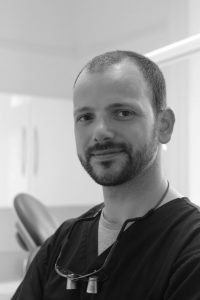 Dr Ceri Owen-Roberts is the Principal of Elgin Park Dental Practice in Redland, Bristol. He graduated from the University of Bristol in 2007, and since qualification has worked across the South West with positions in Bristol, Cardiff and Stroud. He has a particular interest in restorative dentistry and dental implants. Ceri is a member of the International Team of Implantologists and a study club director for the Bristol region. He completed his MClinDent in Restorative and Cosmetic Dentistry with the BPP City of London Dental School. Ceri is an approved clinical mentor for the Straumann implant company and teaches with the Delta Dental Academy, among other private mentoring and other teaching/lecturing roles.
Dr Ceri Owen-Roberts is the Principal of Elgin Park Dental Practice in Redland, Bristol. He graduated from the University of Bristol in 2007, and since qualification has worked across the South West with positions in Bristol, Cardiff and Stroud. He has a particular interest in restorative dentistry and dental implants. Ceri is a member of the International Team of Implantologists and a study club director for the Bristol region. He completed his MClinDent in Restorative and Cosmetic Dentistry with the BPP City of London Dental School. Ceri is an approved clinical mentor for the Straumann implant company and teaches with the Delta Dental Academy, among other private mentoring and other teaching/lecturing roles.
With a focus on dental implants and oral surgery, I used to frequently refer my patients out to colleagues for CBCT scans. These are necessary for accurate diagnostics and treatment planning and offer greater visualisation than plain film. However, as my implant business grew, it was clear from the number of referrals being made that we would benefit from being able to perform CBCT scanning in-house. The benefits wouldn’t only be financial either. In some cases, the ability to take a CBCT and get the results immediately, without sending the patient elsewhere first, can be a huge advantage. I therefore decided to introduce the technology into the practice.
Elgin Park is based in an old Victorian building within a conservation area in Bristol. While it is a joy to work in such a beautiful establishment, it does come with its drawbacks. Not least of these is the inflexibility of the building to accommodate a new internal design. We work in very grand surgery rooms, but we only had an extremely small amount of additional space available when looking to add a CBCT imaging area.
What had been the old butler’s pantry remained a largely unused room and so I wanted to convert it into our new imaging facility. This involved repositioning the fuse board, extending the room, adding temporary walls and lead-lining the walls as per the regulations. In the end, the limited space available was the biggest challenge we had to overcome.
Preparation
In preparation for the project, I did a lot of research into the technologies on the market. I was particularly interested in the radiation dosage of each piece of equipment and the quality of images produced. I also focused very much on the software that came with each CBCT machine. I often use guided implant surgical techniques so I was aware of the importance of finding software that would be intuitive to my needs. I already had experience using several different software systems and often found this to be the limiting factor on the efficiency and quality of dentistry I could deliver, even more so than the imaging technology itself.
Having assessed the number of referrals I had been making and doing the appropriate financial calculations, I knew the business could afford to invest in a CBCT. I liaised with a finance company and arranged to pay the cost of the equipment in monthly instalments in order to make it as easily manageable as possible.
The work begins
We worked with DecaDent to design, organise and complete the refurbishment. Our preferred local building company were responsible for the construction work. During this phase of the project, the main challenges faced were not unexpected. The nature of the old building meant that the walls were thick, solid stone, making them difficult to cut into. While the internal parts of the building didn’t require any planning permissions, even the smallest of changes to such an old building are always very involved!
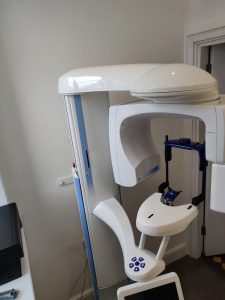
It was a combination of DecaDent’s recommendation and my own market research that led me to select a CBCT machine from Planmeca. The Planmeca ProMaxÒ3D Max was one of the few scanners that was compact enough to fit into the small space we had available. I was also impressed with the quality and abilities of the software, which seemed to meet my needs and enable me to deliver the highest standard of treatment. Crucially, this CBCT achieved high image quality with the Planmeca Ultra Low Dose™ technology, encouraging a safe yet effective imaging procedure. In addition, the offer of excellent technical support bolstered my final decision.
DecaDent installed the CBCT while liaising with Planmeca very efficiently to ensure everything went smoothly. Planmeca then conducted comprehensive staff training and has since provided brilliant support. The team are easy to contact with any queries we might have and have been a pleasure to work with.
The outcome – 8 months later
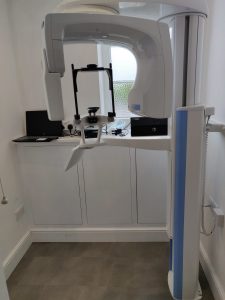
Having eliminated the need to refer patients out for CBCT scans, we can now perform imaging during consultations and discuss the results with patients straight away. This has led to a quicker and more efficient service, while also having a positive influence on the profitability of the practice.
As far as patients are concerned, the new CBCT is an extension of the services we already offered, providing them with more in-house. We have also marketed our CBCT scanning facilities as a new service available by referral and we receive referrals from several local practices.
Upon reflection 8 months later, I wouldn’t do anything differently. I am most proud of the fact that we can take such high quality scans with a low radiation dose. Making the decision to invest in a CBCT is made all the easier with the assurance that you can see all the relevant anatomical structures at a fraction of the radiation
dose of a traditional CT. For my work with dental implants and oral surgery, this has been invaluable.
For any other practitioners looking to invest in an in-house CBCT, I would strongly recommend researching radiation doses for equipment they’re considering. I would also advise looking at independent research rather than the manufacturer’s publications to get an unbiased and more accurate picture. Finally, I would recommend having a contingency budget when looking to renovate an old building in a conservation area, as there are always unexpected costs!
For more information, please visit www.planmeca.com or call 0800 5200 330



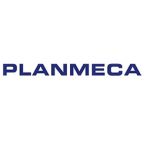


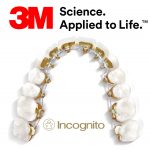

 We all know that a patient’s bone quality can dictate the type of treatment they can receive. Indeed, poor quality bone or evidence of significant bone loss is likely to restrict patients’ options when it comes to dental implant placement.
We all know that a patient’s bone quality can dictate the type of treatment they can receive. Indeed, poor quality bone or evidence of significant bone loss is likely to restrict patients’ options when it comes to dental implant placement.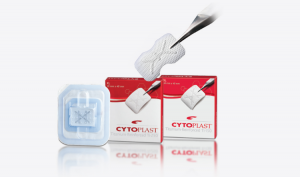
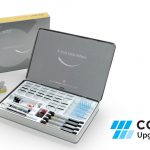

 A patient who has kept a good standard of oral health for years may still face the prospect of losing a tooth. A failed or failing restoration, a tooth that has been damaged as the result of a trauma or infection – it isn’t just decay and poor dental hygiene that can lead to extraction.
A patient who has kept a good standard of oral health for years may still face the prospect of losing a tooth. A failed or failing restoration, a tooth that has been damaged as the result of a trauma or infection – it isn’t just decay and poor dental hygiene that can lead to extraction.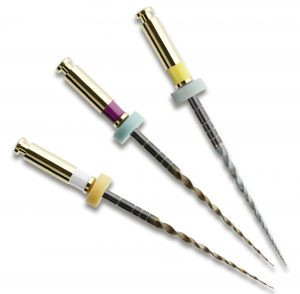 So why, when the offered alternative to extraction is root canal therapy, do some patients still hesitate? If an infection has led to a recommendation for an endodontic procedure, because it is threatening the life of a tooth, this should always be the preferred option. Modern endodontic therapy is quick, ethical and stable. Success rates are extremely high and, even better, a patient will be able to save their tooth rather than needing to replace the extracted one with an implant or prosthesis.
So why, when the offered alternative to extraction is root canal therapy, do some patients still hesitate? If an infection has led to a recommendation for an endodontic procedure, because it is threatening the life of a tooth, this should always be the preferred option. Modern endodontic therapy is quick, ethical and stable. Success rates are extremely high and, even better, a patient will be able to save their tooth rather than needing to replace the extracted one with an implant or prosthesis.
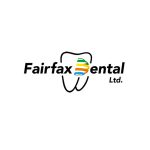
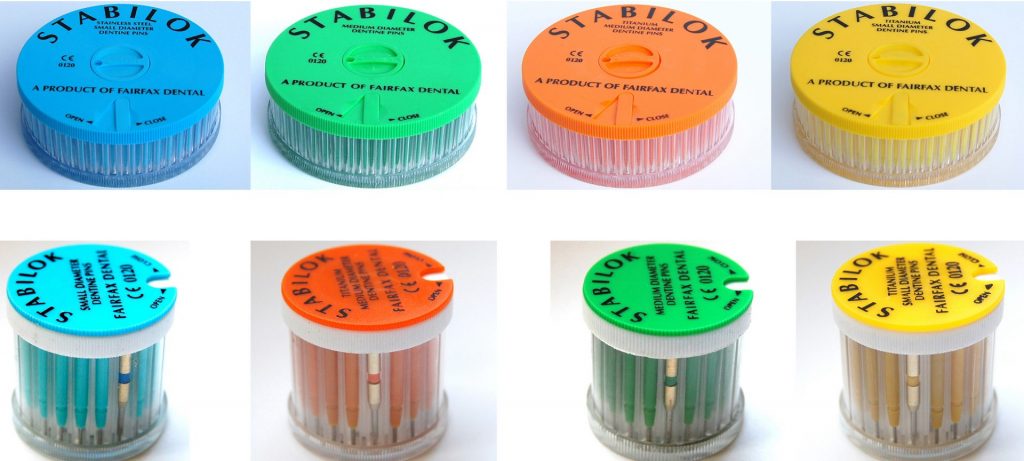 Furthermore, the use of additional tools can further improve results. Dentine pins have been shown to increase retention of restorations compared to use of bonding agents alone.
Furthermore, the use of additional tools can further improve results. Dentine pins have been shown to increase retention of restorations compared to use of bonding agents alone.

